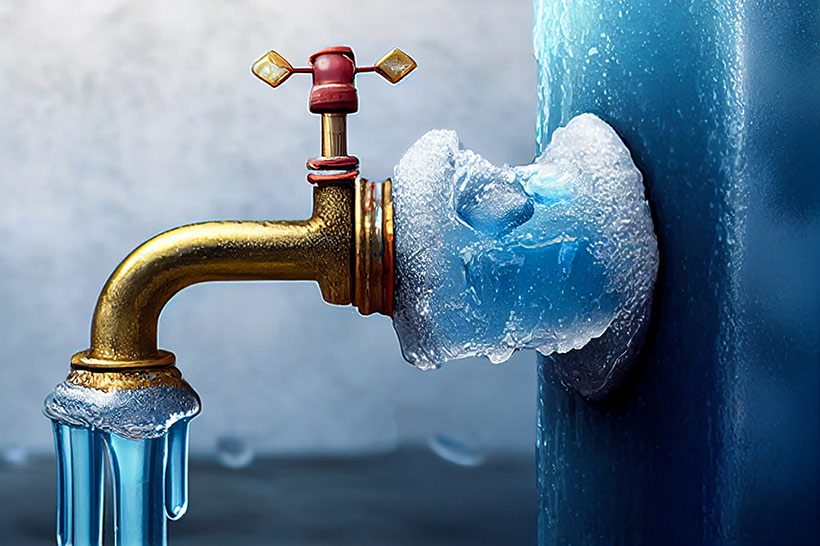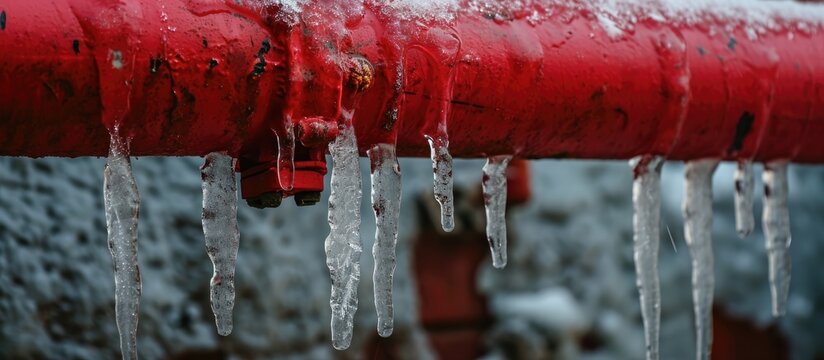Prevent Frozen Plumbing in Cold Weather: Professional Advice
Prevent Frozen Plumbing in Cold Weather: Professional Advice
Blog Article
The article directly below pertaining to Prevent Frozen Pipes is fairly entertaining. Check it out yourself and figure out what you think about it.

Cold weather can wreak havoc on your plumbing, specifically by freezing pipelines. Below's just how to avoid it from occurring and what to do if it does.
Introduction
As temperatures decline, the danger of frozen pipelines rises, potentially resulting in costly fixings and water damage. Understanding just how to avoid icy pipelines is critical for house owners in chilly climates.
Understanding Icy Pipelines
What triggers pipelines to ice up?
Pipelines ice up when exposed to temperature levels below 32 ° F (0 ° C) for prolonged durations. As water inside the pipelines ices up, it expands, taxing the pipeline wall surfaces and possibly creating them to break.
Dangers and problems
Frozen pipelines can result in supply of water disturbances, property damage, and pricey repair work. Burst pipelines can flooding homes and cause substantial architectural damages.
Signs of Frozen Pipeline
Recognizing icy pipelines early can prevent them from rupturing.
Just how to recognize icy pipelines
Seek lowered water circulation from taps, uncommon odors or noises from pipelines, and noticeable frost on revealed pipelines.
Prevention Tips
Protecting susceptible pipes
Cover pipes in insulation sleeves or make use of warmth tape to secure them from freezing temperatures. Focus on pipes in unheated or outside areas of the home.
Home heating strategies
Keep indoor spaces properly heated, particularly areas with plumbing. Open cupboard doors to permit cozy air to distribute around pipelines under sinks.
Safeguarding Outdoor Plumbing
Garden hose pipes and exterior taps
Disconnect and drain yard tubes before winter months. Install frost-proof spigots or cover exterior taps with insulated caps.
What to Do If Your Pipes Freeze
Immediate actions to take
If you suspect frozen pipes, keep faucets open to eliminate stress as the ice thaws. Make use of a hairdryer or towels taken in warm water to thaw pipelines slowly.
Long-Term Solutions
Structural modifications
Think about rerouting pipes away from exterior walls or unheated areas. Include added insulation to attic rooms, basements, and crawl spaces.
Upgrading insulation
Buy top notch insulation for pipelines, attics, and wall surfaces. Proper insulation assists preserve constant temperature levels and lowers the danger of icy pipes.
Verdict
Protecting against frozen pipelines needs positive steps and fast feedbacks. By recognizing the reasons, indicators, and safety nets, house owners can safeguard their plumbing throughout cold weather.
6 Proven Ways to Prevent Frozen Pipes and Protect Your Home
Disconnect and Drain Garden Hoses
Before winter arrives, start by disconnecting your garden hoses and draining any remaining water. Close the shut-off valves that supply outdoor hose bibs and leave the outdoor faucet open to allow any residual water to drain. For extra protection, consider using faucet covers throughout the colder months. It’s also important to drain water from any sprinkler supply lines following the manufacturer’s directions.
Insulate Exposed Pipes
Insulating your pipes is an effective way to prevent freezing. Pipe insulation is readily available at home improvement stores and is relatively inexpensive. Pay close attention to pipes in unheated areas such as the attic, basement, crawl spaces, or garage. Apply foam insulation generously to create a buffer against the cold. You can also wrap your pipes in heat tape or thermostat-controlled heat cables for added warmth.
Seal Air Leaks
Inspect your home for any cracks or openings that could let in cold air. Seal any holes around the piping in interior or exterior walls, as well as the sill plates where your home rests on its foundation. Additionally, make sure to keep your garage door closed unless you’re entering or exiting. Leaving it open creates a significant air leak that can lead to frozen pipes.
Allow Warm Air Circulation
During cold snaps, it’s essential to allow warm air to circulate evenly throughout your home. Leave interior doors ajar to promote better airflow. Open kitchen and bathroom cabinets to help distribute heat consistently around the rooms. If you have small children or pets, be sure to remove any household chemicals or potentially harmful cleaners from open cabinets for safety.
Let Faucets Drip
A small trickle of water can make a big difference in preventing ice formation inside your pipes. When temperatures drop significantly, start a drip of water from all faucets served by exposed pipes. This continuous flow helps prevent the water from freezing. Additionally, running a few faucets slightly can relieve pressure inside the pipes, reducing the chances of a rupture if the water inside does freeze.
https://choateshvac.com/6-proven-ways-to-prevent-frozen-pipes-and-protect-your-home/

I'm very eager about How To Avoid Freezing Pipes and I hope you enjoyed the new piece. Loved our blog? Please quickly share it. Let other people locate it. Thank you for being here. Don't hesitate to stop by our website back soon.
Book My Estimate Report this page